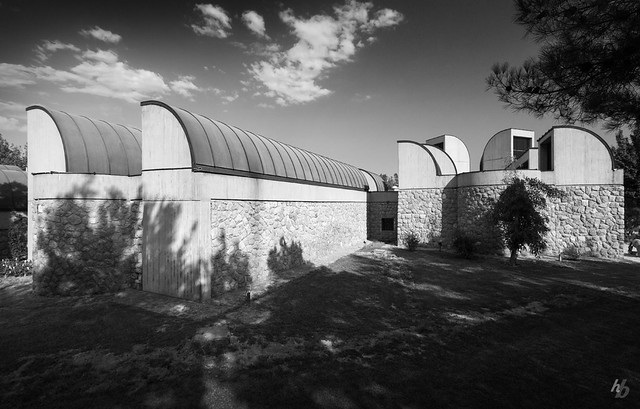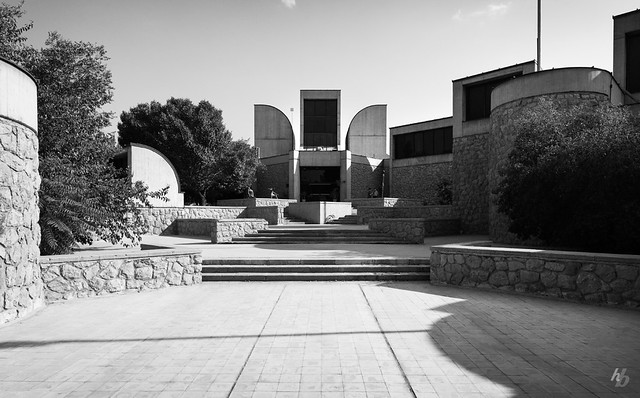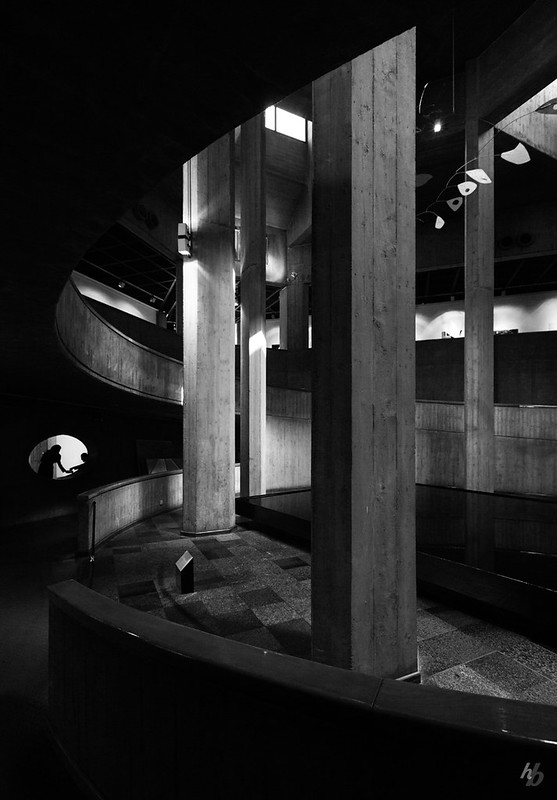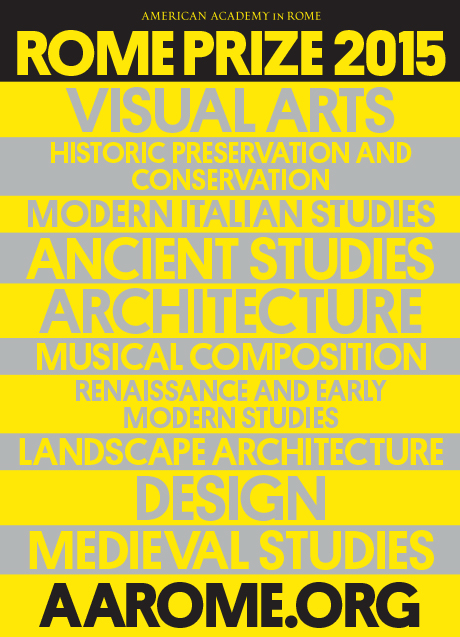Like my time-lapse walk of the High Line posted last week, here is a north-to-south tour of the third section of the High Line, which opened to the public on September 21. About 2/3 of this section is a solid-surface walkway that parallels plantings kept in their found, as-is state with wildflowers and other vegetation. After that, the park changes to its more familiar palette of precast concrete pavers, benches, reused rails, and so forth; as will be seen, these elements are used in a slightly different way than the first two sections.
Some steel pylons overlooking the Hudson River and West Street:
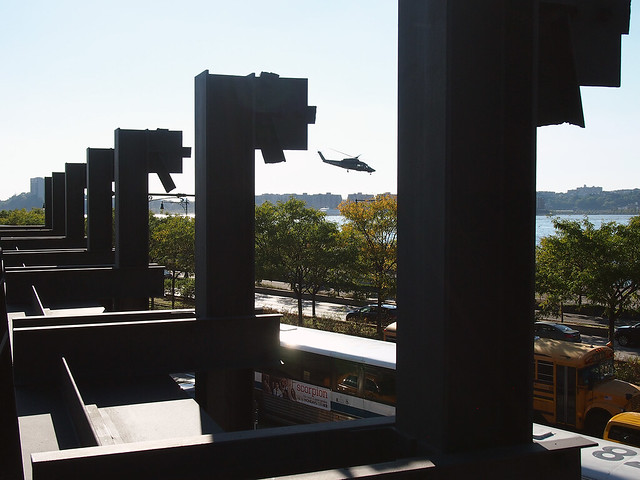
About halfway along the straightaway paralleling the Hudson River are these large pieces of timber stacked into seating overlooking the Hudson on the right and the Hudson Yards on the left:

Another view of the benches, this time looking north to Javits:

Separating the walkway from the wildflowers is chain link fencing that the wildflowers poke through:

A large seating area can be found at the bend where the High Line turns east (the vista will be full of Hudson Yard towers in five years):

Another look at the bench made from steel and wood:
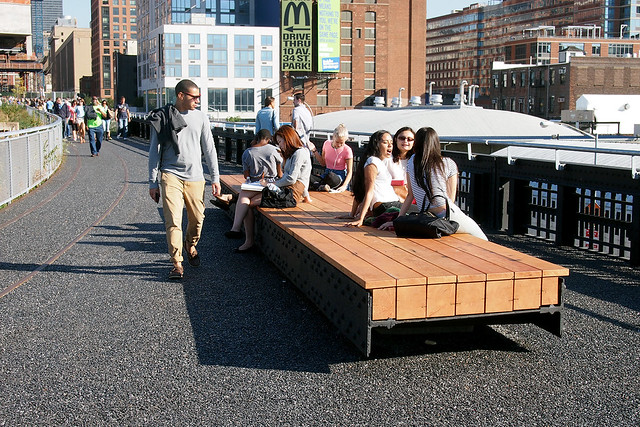
A view of the wildflowers looking west:
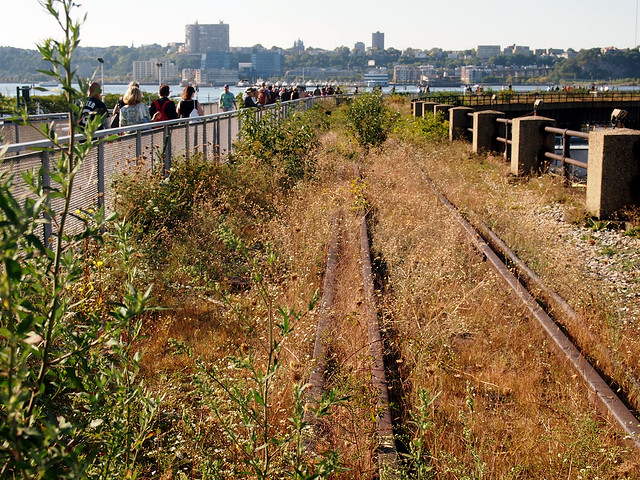
Section 3 has the High Line's only playground, where kids can squirrel their way through the steel beams (this is where this section transitions from "wild" to "tame":

At the end of the playground is a tube where kids can pop their heads up in a planting bed:
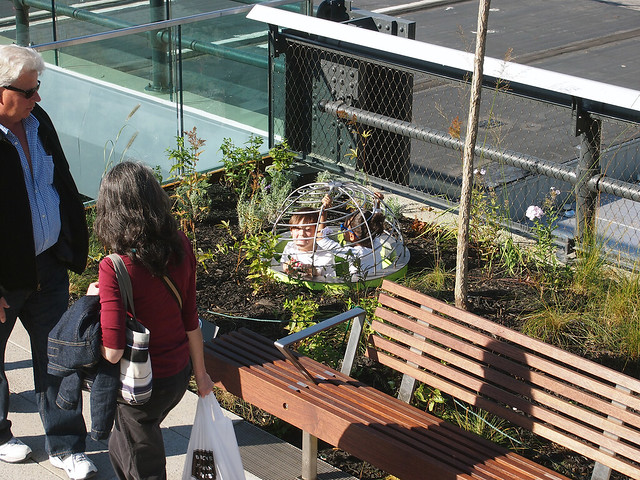
A stair at 11th Avenue gives an elevated view of the park, here looking west:

Seating over 11th Avenue incorporates tall backs for safety:
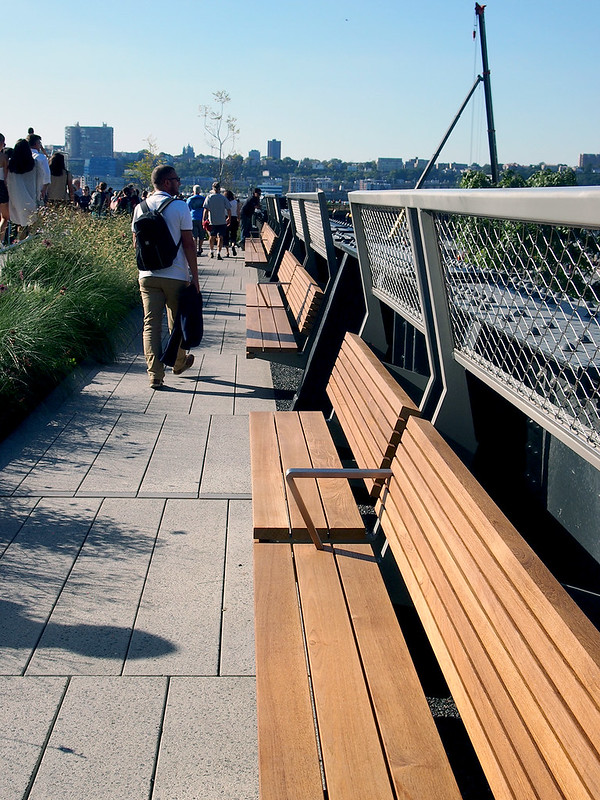
Some of the peel-up benches in section 3 combine to make really long benches:
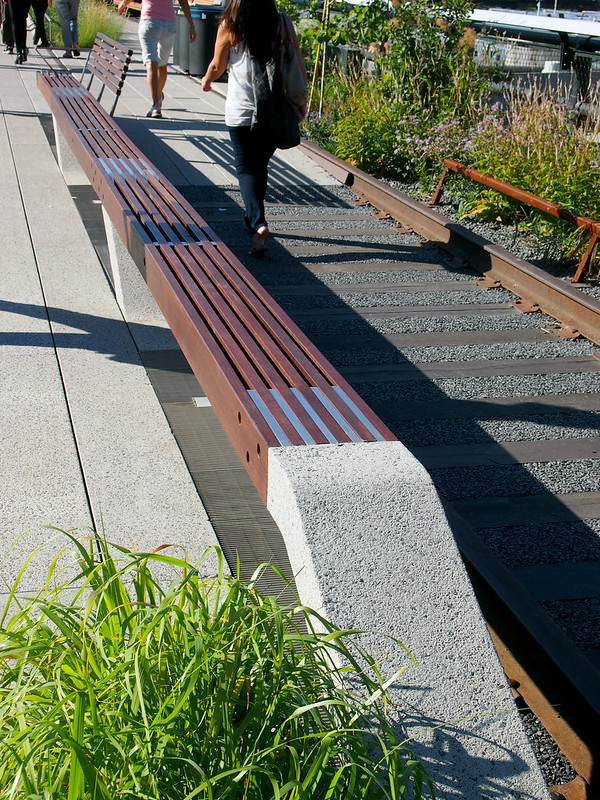
Another slightly different detail is the creation of tables similar to the benches:

Also new is being able to walk between the rails and atop the railroad ties:
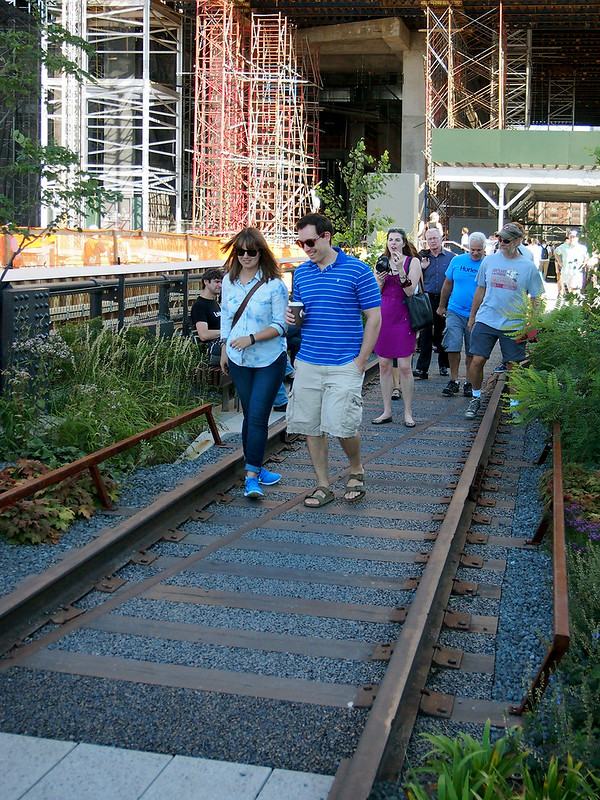
Some steel pylons overlooking the Hudson River and West Street:

About halfway along the straightaway paralleling the Hudson River are these large pieces of timber stacked into seating overlooking the Hudson on the right and the Hudson Yards on the left:

Another view of the benches, this time looking north to Javits:

Separating the walkway from the wildflowers is chain link fencing that the wildflowers poke through:

A large seating area can be found at the bend where the High Line turns east (the vista will be full of Hudson Yard towers in five years):

Another look at the bench made from steel and wood:

A view of the wildflowers looking west:

Section 3 has the High Line's only playground, where kids can squirrel their way through the steel beams (this is where this section transitions from "wild" to "tame":

At the end of the playground is a tube where kids can pop their heads up in a planting bed:

A stair at 11th Avenue gives an elevated view of the park, here looking west:

Seating over 11th Avenue incorporates tall backs for safety:

Some of the peel-up benches in section 3 combine to make really long benches:

Another slightly different detail is the creation of tables similar to the benches:

Also new is being able to walk between the rails and atop the railroad ties:









